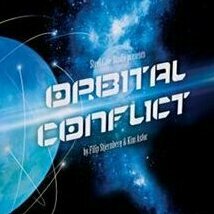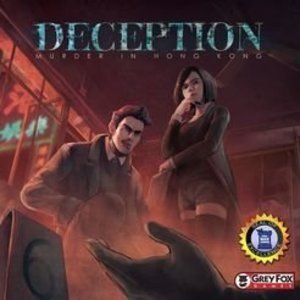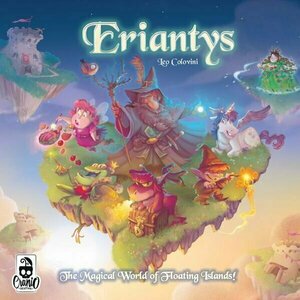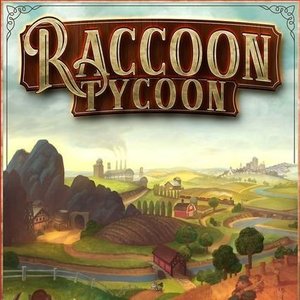
MyTP Skateboarding - Free Skate
Games and Sports
App
Welcome to the streets of Randertown - no crazy bling bling, simply amazing and real skateboard...
Purple Phoenix Games (2266 KP) rated Orbital Conflict in Tabletop Games
Sep 10, 2019
Orbital Conflict is a player versus player (PvP) card game in which the winner is the player showing the most VPs on their cards at game end. It is a game where placement of cards and orientation of cards is paramount in creating a space station that can dole out damage, take a ton of damage, or hybridizes offense and defense using resources granted from off-station investors.
DISCLAIMER: We were provided a copy of this game for the purposes of this review. These are final components, and the game is available from the publisher and other online retail stores. Also, I do not intend to explicitly cover every rule for the game, but to give an idea of game flow and play. -T
To setup the game (in this case a 1v1 head-to-head bout) shuffle all the cards with the white back together and deal each player a hand of five. Shuffle the smaller investor cards to form a draw pile. Give the starting player the Initiative card and you are ready to start!
The game follows a simple game flow following three phases per round: Draw, Main, Combat. During the Draw phase, the player with the Initiative card (I’ll call them the active player) will draw two cards from the white-backed deck (which I will just call cards). Then the other player will draw two cards as well. The active player then draws two investor cards for themselves and places them in front of their play area as possible investors to claim. The other player does the same. If there are any cards containing discard abilities that a player would like to play during the Draw phase, and the discard text reads they may do so during the Draw phase or any phase, they may play them and follow the discard instructions now.
Once done, the game moves on to the Main phase. During this phase the active player will play any cards they wish that are appropriate for this phase, and then the other player will do the same. During this phase players will be playing cards from hand (and as many as they would like) to add on to their space station, activate modules that were previously deactivated, claim investor cards, and prepare for the next game phase. Space stations can be added to via modules. Modules can be single cards, or multiple splayed cards. As you can see in the photo above cards have icons to the left of the white barrier and some will also have icons to the right. Depending on how a card is added to a module certain icons may be covered and therefore inactive. When adding a card to a module (called an extension) the player decides if they want to add the card to the right of the splay, thus covering up icons to the right of the barrier of the covered card, or under the stack to the left of the splay. Additionally, players may flip any card over to have the back showing, which will provide icons usable in a station module. There are restrictions for playing cards, but I will let you discover those on your own.
The game follows a simple game flow following three phases per round: Draw, Main, Combat. During the Draw phase, the player with the Initiative card (I’ll call them the active player) will draw two cards from the white-backed deck (which I will just call cards). Then the other player will draw two cards as well. The active player then draws two investor cards for themselves and places them in front of their play area as possible investors to claim. The other player does the same. If there are any cards containing discard abilities that a player would like to play during the Draw phase, and the discard text reads they may do so during the Draw phase or any phase, they may play them and follow the discard instructions now.
Once done, the game moves on to the Main phase. During this phase the active player will play any cards they wish that are appropriate for this phase, and then the other player will do the same. During this phase players will be playing cards from hand (and as many as they would like) to add on to their space station, activate modules that were previously deactivated, claim investor cards, and prepare for the next game phase. Space stations can be added to via modules. Modules can be single cards, or multiple splayed cards. As you can see in the photo above cards have icons to the left of the white barrier and some will also have icons to the right. Depending on how a card is added to a module certain icons may be covered and therefore inactive. When adding a card to a module (called an extension) the player decides if they want to add the card to the right of the splay, thus covering up icons to the right of the barrier of the covered card, or under the stack to the left of the splay. Additionally, players may flip any card over to have the back showing, which will provide icons usable in a station module. There are restrictions for playing cards, but I will let you discover those on your own.
Purple Phoenix Games (2266 KP) rated Deception: Murder in Hong Kong in Tabletop Games
Jun 12, 2019
MURDER! As an Investigator, that’s just another day on the job for you. This time feels different, though. Something about this case is off… After the initial evidence is gathered, the team’s Forensic Scientist has disclosed to the team that the killer is one of the Investigators! Everyone is on edge, accusing every other Investigator of being the murderer. Everyone had potential means and motive, and it is up to you to figure it out! As the Forensic Scientist uncovers more evidence, the details of the crime will come to light, and the killer will be revealed. Put your investigative and deductive skills to the test as you try to unmask the killer, or throw the team off your scent if you are the culprit!
DISCLAIMER!! This review is for vanilla Deception: Murder in Hong Kong. We have plans to add in the expansion once one of us purchases it and learns it and teaches it to the rest of us. Should that happen and our review change, we will add that information to this review or to a new review and link to it from here. -T
Deception: Murder in Hong Kong is a game of bluffing, deduction, and hidden identity. All players (except for the Forensic Scientist) have a secret role in the game – Investigator, Witness, Murderer, or Accomplice. The Forensic Scientist knows who the killer is, and how they did it. It is their job to guide the Investigators to the killer by providing clues about the uncovered evidence. The Investigators are trying to interpret the clues and uncover the killer’s identity. The Witness knows who the killer is, but has not yet figured out how they did it. The Murderer and Accomplice are looking to pin the murder on one of the other innocent members of the team! As clues are revealed, each player gets a chance to make a case against the player whom they think is the murderer. You must convince everyone of your logic, or else the killer could get away! In a game where everyone is a suspect, who can you trust? Gather clues, present your case, and put your poker face to the test in this ultimate game of deception! (See what I did there?)
I thoroughly enjoy games of deduction. Anything where you have to think and solve puzzles/riddles/etc. is fun for me. In Deception, it’s a race to see who can find the solution first. Not only do you have to deduce the correct answer from the provided clues, but you also have to put your persuasive skills to the test! Unless you can convince everyone that a specific player is the killer, they might turn their accusations towards someone else, or even worse, towards YOU! You really have to think outside of the box to interpret the Forensic Scientist’s clues, and I like to challenge myself to find the solution in as few turns as possible. The faster I can solve the murder, the smarter I feel. Don’t lie, it makes you feel smart too when you figure it out before anyone else!
The only part of Deception that I don’t really enjoy is the bluffing aspect, which is one of the most integral parts of the game, I know. I am just a horrible liar with a questionable poker face. If we play and I am the Murderer, I am almost always found out. Whenever anyone accuses me, my mind blanks and I cannot think of a single convincing way to get everyone off my scent! That is a personal problem, though, because when I get to be just a regular ol’ Investigator, I have a blast! I can still be accused, but I always feel like I have an easier time getting people off my case if I am actually innocent. I know some people really enjoy being the Murderer because they like the challenge of deceiving the entire team. I am not one of those people though. If I was guaranteed to be just a plain Investigator (or the Forensic Scientist) every time, I would probably pull this game out more!
Deception: Murder in Hong Kong is a ‘party’ game, but with the right group, it can still be a challenging game. A higher player count, in this case, does not necessarily equate to a chaotic game either. So give Deception a try. It’ll be worth it! Purple Phoenix Games gives it a 17 / 24.
https://purplephoenixgames.wordpress.com/2018/12/26/deception-murder-in-hong-kong-review/
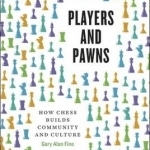
Players and Pawns: How Chess Builds Community and Culture
Book
A chess match seems as solitary an endeavor as there is in sports: two minds, on their own, in...
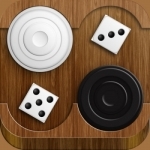
Backgammon+
Games and Entertainment
App
One of the oldest board games and the first ever Backgammon game for iPhone by Adikus, is now...

Rainbow Cake Bakery - Pastry Chef
Games and Entertainment
App
Tah-Daaah! Welcome to the Rainbow Cake Bakery Shop! Here we can make various rainbow desserts...

Deep Sea Adventure
Tabletop Game
From the rulebook: A group of poor explorers hoping to get rich quickly heads out to recover...
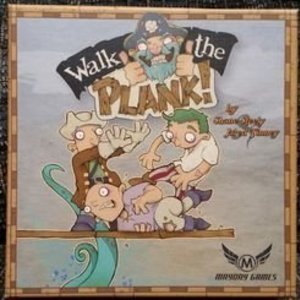
Walk the Plank!
Tabletop Game
In Walk the Plank!, players represent the worst pirates in a captain's crew. The captain has rounded...
Purple Phoenix Games (2266 KP) rated Raccoon Tycoon in Tabletop Games
Jun 12, 2019
Technically, the players are these cute little Victorian-era anthropomorphized animals trying to become the wealthiest of all Astorians (the city is called Astoria). This is measured by Victory Points. You gain VPs in several ways and the actions you take on your turn are limited.
What are these actions you can take on your turn? You may take one action on your turn: play a card from your hand to receive commodities (in really great meeples) and increase the price of commodities to be sold, sell commodities from your supply and decrease the price of the commodities by the number sold, purchase a town card using commodities, purchase a building using money earned, or begin an auction of a railroad using money. Each of these actions ultimately affects your opponents as they either adjust the market price of commodities, removes certain coveted assets from the offer, or otherwise depletes their resources. Also, there are mission cards in the box that are just not referenced in the rulebook, but two are to be dealt to the players and one chosen as a hidden goal for endgame scoring.
I will be honest. I would not normally be attracted to this style of game, and I may not have ever purchased it in the wild based on the box. I have zero games like it in my collection, and have not really played many that are similar. BUT, I absolutely love this game. Once you get the hang of the different actions you can really start planning ahead and creating your strategy based on what your opponents are doing and how the commodity market is shaping up. You can block opponents from monopolizing similar types of railroads, preventing them from scoring bulk points. You can just concentrate on liquidating assets for maximum return. All of this can be done by completing just one action on your turn, and it keeps you interested in what your opponents are doing as well. That is a mark of a great game. This isn’t just multiplayer solitaire at all.
Components. The box has really really great artwork on it. In fact, the whole game LOOKS incredible. I have seen some remarks that the artwork on the building tiles is in a different style from the rest of the game and it detracts from their enjoyment and immersion. I disagree. When we played the first time I asked if my opponent noticed the difference in art style and if it detracted from the enjoyment of the game. Nope. The game board is good quality and laid out well. The commodities tokens are really great. I do wish, however, that the meeple shape matched that of the icon shown throughout the game. This is apparent in coal and iron, specifically. The others are fine and they match well enough, but there is a missed opportunity. The town and railroad cards are of good quality, and the building tiles are very thick and chunky – and ultimately not necessary to be so since you don’t really handle them much, but it’s always nice to have deluxe-feeling components. The paper money is of good quality – for paper money, that is. The best component of the game – the 1st player marker. I didn’t get it in the shot below because it just woodent (I did that on purpose) fit! It is a HUGE brown raccoon meeple and it’s marvelous. Know what else I really appreciate? THERE IS NO INSERT. Nothing to throw away as soon as you open the box because undoubtedly once you punch everything and try to put it in the useless insert there is no way so you just throw it away anyway and are left feeling like maybe they could have saved some time and money not worrying about an insert that is actually pointless and detrimental to setup and teardown (I’m looking at you, pointless Fantasy Flight box-space-eater inserts).
I don’t know if you can tell from my verbosity in this review, but I adore this game. It is sleek, it is well-produced, and ultimately it is incredibly fun to play. We at Purple Phoenix Games give this one a VERY enthusiastic 14 / 18.
https://purplephoenixgames.wordpress.com/2019/03/01/raccoon-tycoon-review/
